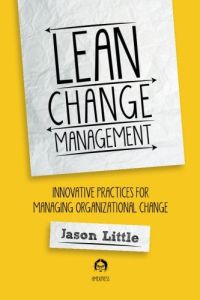Join getAbstract to access the summary!

Join getAbstract to access the summary!
Jason Little
Lean Change Management
Innovative Practices for Managing Organizational Change
Happy Melly Express, 2014
What's inside?
Consider “feedback-driven” change management, which offers agile tools, innovative practices and lean outcomes.
Recommendation
Change agent Jason Little gets you thinking about the good, the bad and the ugly of the “lean change management cycle.” His philosophy is to get rid of static charts and dusty project plans and instead implement a “feedback-driven” change management process. Little’s instructive guide will fill your toolbox with techniques to encourage participation, instruments that visualize progress, and practices that help overcome obstacles. You don’t have to be a connoisseur of lean approaches and agile tools to appreciate this solid manual. getAbstract recommends Little’s practical approach to managers driving and living through change and to those contemplating a program of lean change management.
Summary
About the Author
Jason Little began his career as a web developer before moving into management, Agile Coaching and consulting. He helps companies discover more effective practices for managing organizational change.

















Comment on this summary